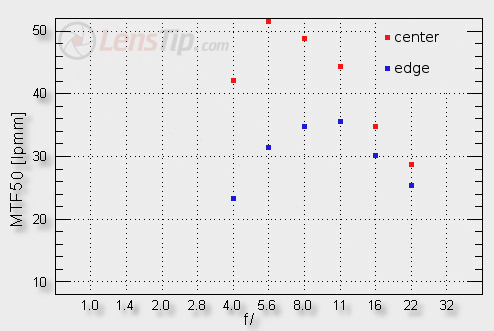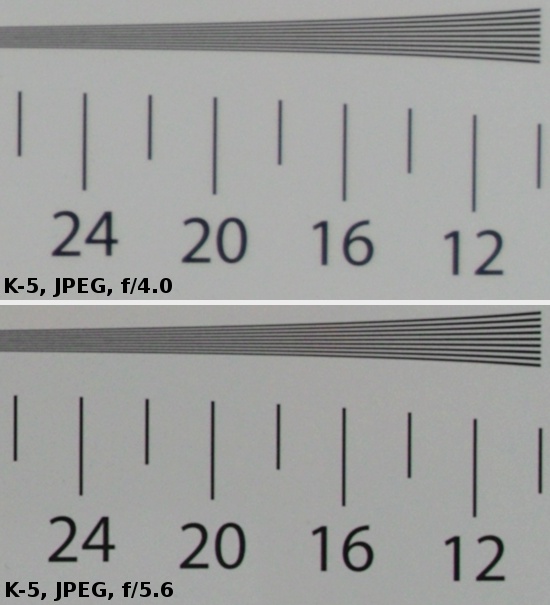Pentax smc DA 15 mm f/4 ED AL Limited
4. Image resolution
Let’s check how the performance of the Pentax smc DA 15 mm f/4 ED AL Limited compares. Below you can find the results the tested lens got in the centre and on the edge of the frame.

Please Support UsIf you enjoy our reviews and articles, and you want us to continue our work please, support our website by donating through PayPal. The funds are going to be used for paying our editorial team, renting servers, and equipping our testing studio; only that way we will be able to continue providing you interesting content for free. |
- - - - - - - - - - - - - - - - - - - - - - - - - - - - - - - - - - - - - - - - - - - - - - - -
When it comes to the frame centre we don’t have any reservations whatsoever. Quite the opposite is true – the lens deserves only praise. Already at the maximum relative aperture it reaches a very good result of about 42 lpmm. On stopping down by one stop you see the lens reaching a quite sensational level.
It is especially worth emphasizing because most of lenses reach high MTF values only when you stop them down by 2-3 EV – here it is enough you stop down by 1 EV. The edge of the frame is a much worse sight. Off-axis aberrations, the curvature of the field and the small rear element which simply isn’t able to “service” a much bigger sensor make themselves keenly felt. As a result there is a huge discrepancy between what we see in the centre and on the edge. If we want to get at least a useful image we must stop down the lens noticeably more than by 1 EV stop. You must remember, though, that just because of that field curvature, in situations when objects in your photo frame cover its shape, the real image provided by the lens might be nicer than the graphs indicate. It doesn’t change the fact that the field curvature is an aberration in itself and in a good lens it shouldn’t be so pronounced.
The crops below were taken from JPEG photos of our test chart centre.
 |






